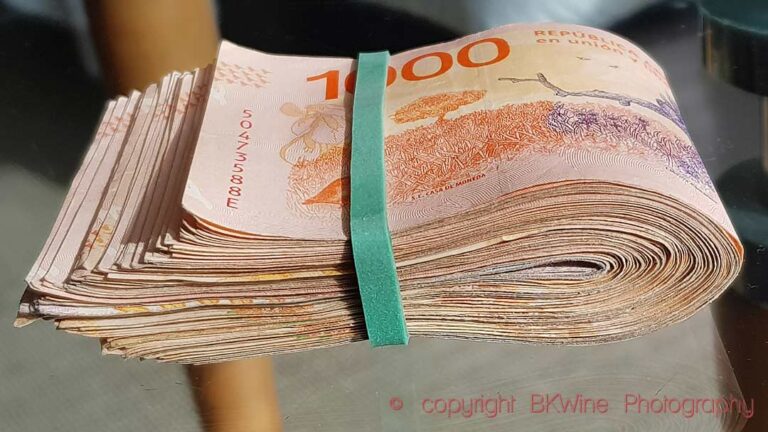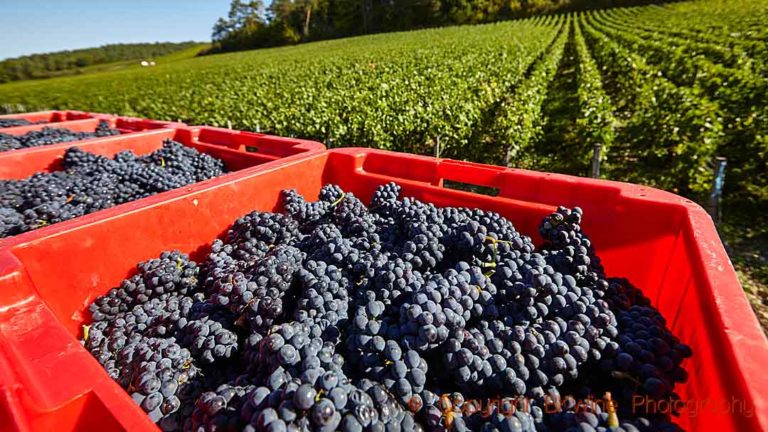Vermouth has made a comeback. For us, it has never been out of date. We have had dry vermouth as our favourite aperitif for a long time. But perhaps some people considered it a bit old-fashioned. But not anymore. Vermouth is back in fashion. French vermouth, not least. We have tasted the Dolin vermouths from Chambéry in the French Alps, and compared it to our “house” vermouth, Noilly Prat.
Vermouth is a so-called “flavoured wine”. The flavours come from plants and spices macerated in white wine. The wine is fortified with spirits to achieve an alcohol content of between 15 and 22%. Sugar is also added.
The first vermouth was made in Turin in northern Italy in 1786 by Antonio Benedetto Carpano. Today, vermouth is made in many countries, but the most famous ones come from Italy and France.
This is a longer version of an article published on Forbes.com.
Dry or sweet?
There is dry and there is sweet vermouth. No vermouth, however, is completely dry. Sugar is added to all of them. These are the European designations for style and sugar content:
- Extra dry (sugar content of less than 30 grams per litre)
- Dry (sugar content of less than 50 g/l)
- Blanc/Bianco/White (sweet vermouth with a sugar content of at least 130 g/l)
- Rouge/Rosso/Red (sweet vermouth with a minimum sugar content of at least 130 g/l)
The white is the most popular, sweet vermouth. Italy, with Martini and Cinzano leading the way, is best known for its sweet vermouths, while Noilly Prat, a French brand, is famous for its dry and extra dry vermouth.
We prefer the dry versions which have more character from herbs and fruits. The sweet is perhaps better as a drink mixer when other flavours are more important.
The secret herbs, spices and fruits
In good quality vermouth, you should always be able to discern a slight bitterness from the herbs. An essential ingredient is, of course, wormwood; the name vermouth is derived from the German word for wormwood, wermut. Vermouth makers keep the exact recipe a secret. In general, 20–30 different plants and spices macerate in the white wine to give flavour. It could be cinnamon, cloves, orange peel, orange peel, coriander, hyssop, basil, gentian, chamomile, ginger…
Getting the right aromatic character is the whole secret. You must have a mixture that gives the wine a herbal and slightly bitter taste that balances the sweetness. The wormwood and other plants used are considered good for digestion and for stimulating the appetite. It is not a coincidence that vermouth is such a good aperitif.
Dolin, Vermouth de Chambéry
Giants such as Martini & Rossi and Cinzano dominate the vermouth market. But there is room for the small-scale enterprise. Dolin is based in Chambéry in Savoie in the French Alps. The mountains are just around the corner, and here, many plants grow that add flavour to the Dolin vermouth.
Dolin made its first vermouth in 1821. The founder’s name was Joseph Chavasse. The company was named Dolin in 1843 when Joseph’s daughter married Louis-Ferdinand Dolin. Upon his death in 1869, his widow Marie continued to develop the company, and then his daughter Marie-Rosalie took over, together with her brother Ferdinand. After the First World War, the Sevez family, friends of the Dolins, took over the company, and it is still in their possession today.
Dolin’s vermouth was a success in the Paris cafés in the 1800s. It won prizes, even a medal at the World Exhibition in Philadelphia in 1876, thanks to Marie-Rosalie’s initiative. The United States was and remains an important exporting country. During the Prohibition period, Dolin even offered non-alcoholic vermouth.
Tasting vermouth
Dolin Dry Vermouth
The colour is light, almost completely colourless, the nose discreet and elegant with an unmistakable herbal character. It feels pleasantly dry in the taste with a touch of bitter citrus and menthol. Superb as-is, on its own, maybe with a slice of lemon. The alcohol content is 17.5%.
Dolin Blanc Vermouth
Dolin made its first white vermouth in 1881. It is herbal on the nose with lemon and fresh almonds. On the palate, there is citrus and elderberry. It has an excellent herbal character and a slight bitterness at the end to balance the sweetness. The plant mixture includes hibiscus, basil, cinnamon, wormwood, gentian and some more. The alcohol content is 17.5%.
Dolin Rouge Vermouth
This was the first vermouth that Joseph Chavasse made. The recipe remains the same. It is easily the best red vermouth I have tasted. The colour is a beautiful copper red. The fruit is ripe and a bit jammy, but combined with the slightly bitter medicinal herbs, it is balanced. There’s a delicious spiciness at the end. The alcohol content is 16%. Drink it cold with ice.
Noilly Prat, French vermouth from the Mediterranean
Comparing Dolin with Noilly Prat, France’s best-selling vermouth is interesting. It shows that even if vermouth is made roughly the same way everywhere, there are significant differences. Noilly Prat is made in the small town of Marseillan not far from Montpellier, by the Mediterranean. The company was founded in 1813 by Joseph Noilly. In 1971 it was bought by Martini & Rossi, which is now part of the Bacardi group. But Noilly Prat retains its distinctive character.
Noilly Prat Original Dry
The specific maturation process of Noilly Prat leaves its mark on the wine. The wine is aged in barrels outside for one year, exposed to the forces of the weather. This affects both colour and taste. The wine is dark compared to Dolin’s dry vermouth (see picture above).
The nose is more aromatic, floral and slightly oxidized (which is not at all a negative thing) with aromas from orange and citrus. The taste is powerful, the herbal character is pronounced, and there’s orange and a slight bitterness at the end. It feels a little sweeter than the Dolin Dry. Some plants and spices used for the Original Dry are chamomile, coriander from Morocco, bitter oranges from Tunisia and elderflower. 18% alcohol.
Which one do we prefer, Noilly Prat Original Dry or Dolin Dry? They are equally delicious, just very different. We like to have both available in the fridge at all times.
Cocktails with vermouth
Chambéry Cassis: Dry or white vermouth is poured over a splash of crème de cassis. Top up with club soda.
Martini: The classic recipe is half gin and half dry vermouth, but use whichever proportions that you like. Garnish optional, but a slice of lemon is always nice.
Negroni: One-third each of red vermouth, gin and Campari.
Americano: Mix Campari, red vermouth, and lemon juice and top up with sparkling water.
Bamboo: Equal parts dry vermouth and dry sherry and a dash of Angostura bitter.
And the easiest way to enjoy it: Dry vermouth with ice and a slice of lemon or as a long-drink mixed with your favourite tonic water (preferably as dry a tonic as you can find).
Vermouth and cooking
Vermouth is also an indispensable ingredient in the kitchen. Instead of using a white wine you can take a good dash of vermouth (dry!) in the sauce or to deglace the frying pan. When you make an omelette you can mix it with the eggs before whisking them. Just a few examples. It adds a little bit of extra aromas and body whenever you use it. And it can help keeping the cook happy. We always have a bottle in the fridge.













